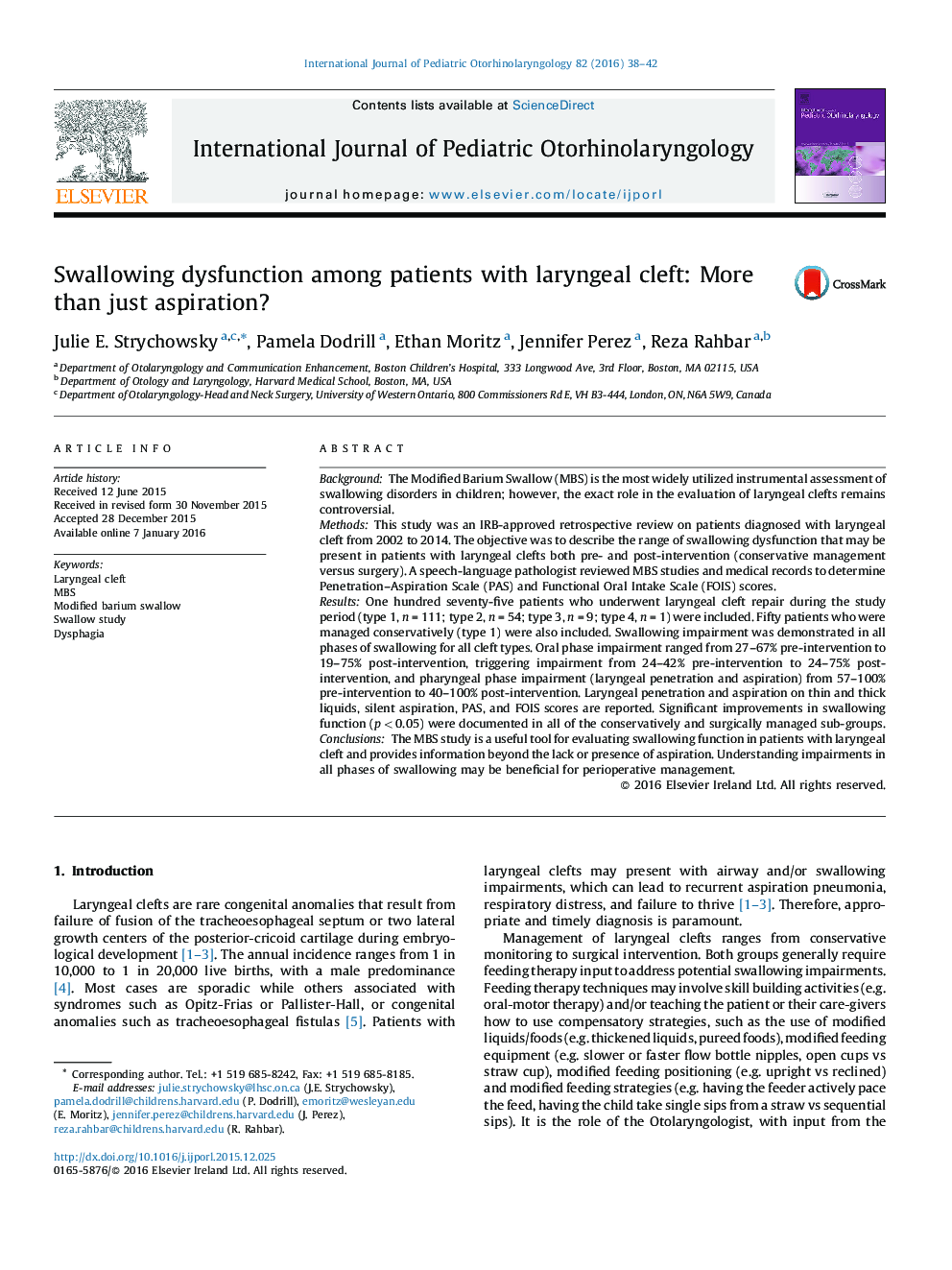| Article ID | Journal | Published Year | Pages | File Type |
|---|---|---|---|---|
| 4111358 | International Journal of Pediatric Otorhinolaryngology | 2016 | 5 Pages |
BackgroundThe Modified Barium Swallow (MBS) is the most widely utilized instrumental assessment of swallowing disorders in children; however, the exact role in the evaluation of laryngeal clefts remains controversial.MethodsThis study was an IRB-approved retrospective review on patients diagnosed with laryngeal cleft from 2002 to 2014. The objective was to describe the range of swallowing dysfunction that may be present in patients with laryngeal clefts both pre- and post-intervention (conservative management versus surgery). A speech-language pathologist reviewed MBS studies and medical records to determine Penetration–Aspiration Scale (PAS) and Functional Oral Intake Scale (FOIS) scores.ResultsOne hundred seventy-five patients who underwent laryngeal cleft repair during the study period (type 1, n = 111; type 2, n = 54; type 3, n = 9; type 4, n = 1) were included. Fifty patients who were managed conservatively (type 1) were also included. Swallowing impairment was demonstrated in all phases of swallowing for all cleft types. Oral phase impairment ranged from 27–67% pre-intervention to 19–75% post-intervention, triggering impairment from 24–42% pre-intervention to 24–75% post-intervention, and pharyngeal phase impairment (laryngeal penetration and aspiration) from 57–100% pre-intervention to 40–100% post-intervention. Laryngeal penetration and aspiration on thin and thick liquids, silent aspiration, PAS, and FOIS scores are reported. Significant improvements in swallowing function (p < 0.05) were documented in all of the conservatively and surgically managed sub-groups.ConclusionsThe MBS study is a useful tool for evaluating swallowing function in patients with laryngeal cleft and provides information beyond the lack or presence of aspiration. Understanding impairments in all phases of swallowing may be beneficial for perioperative management.
